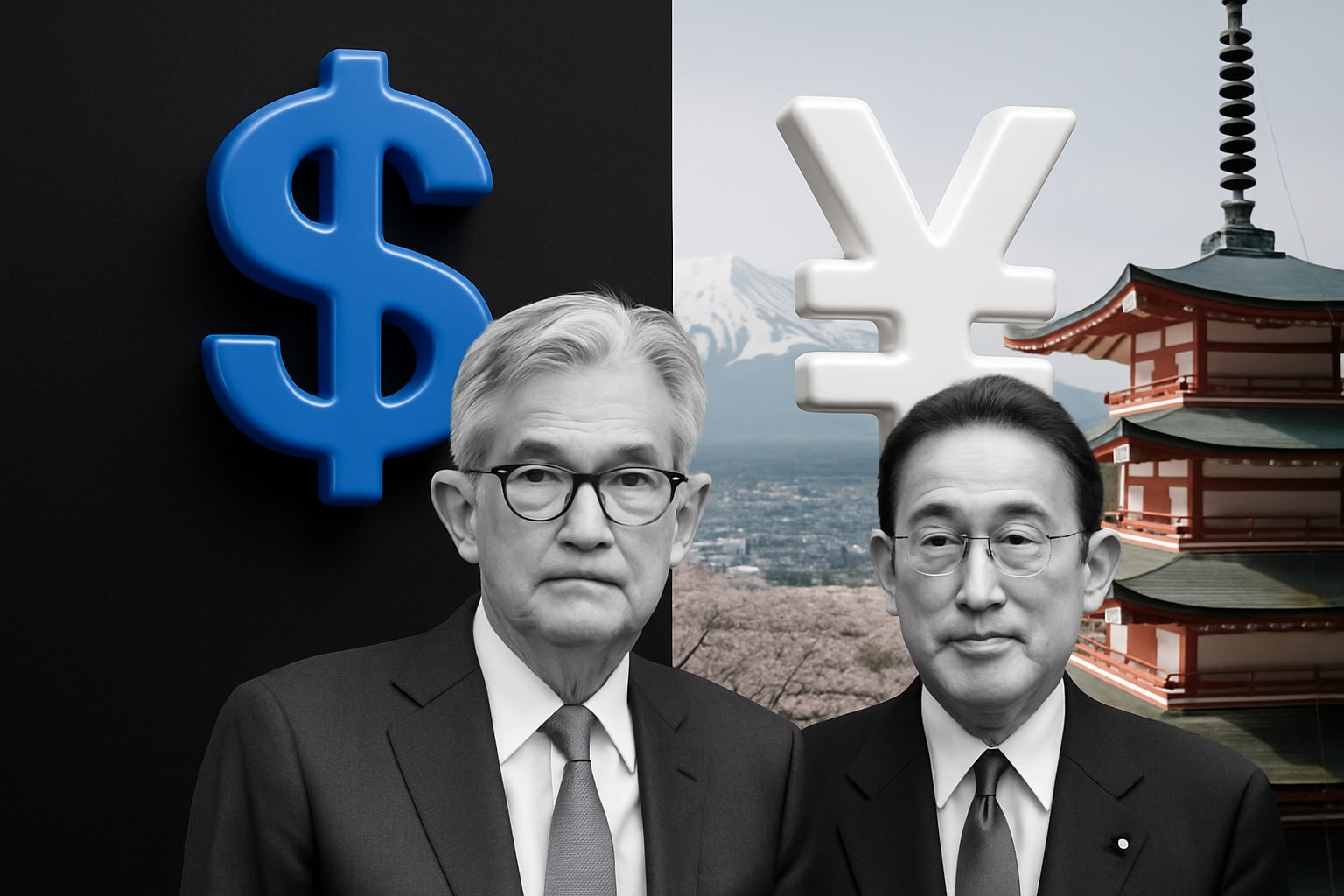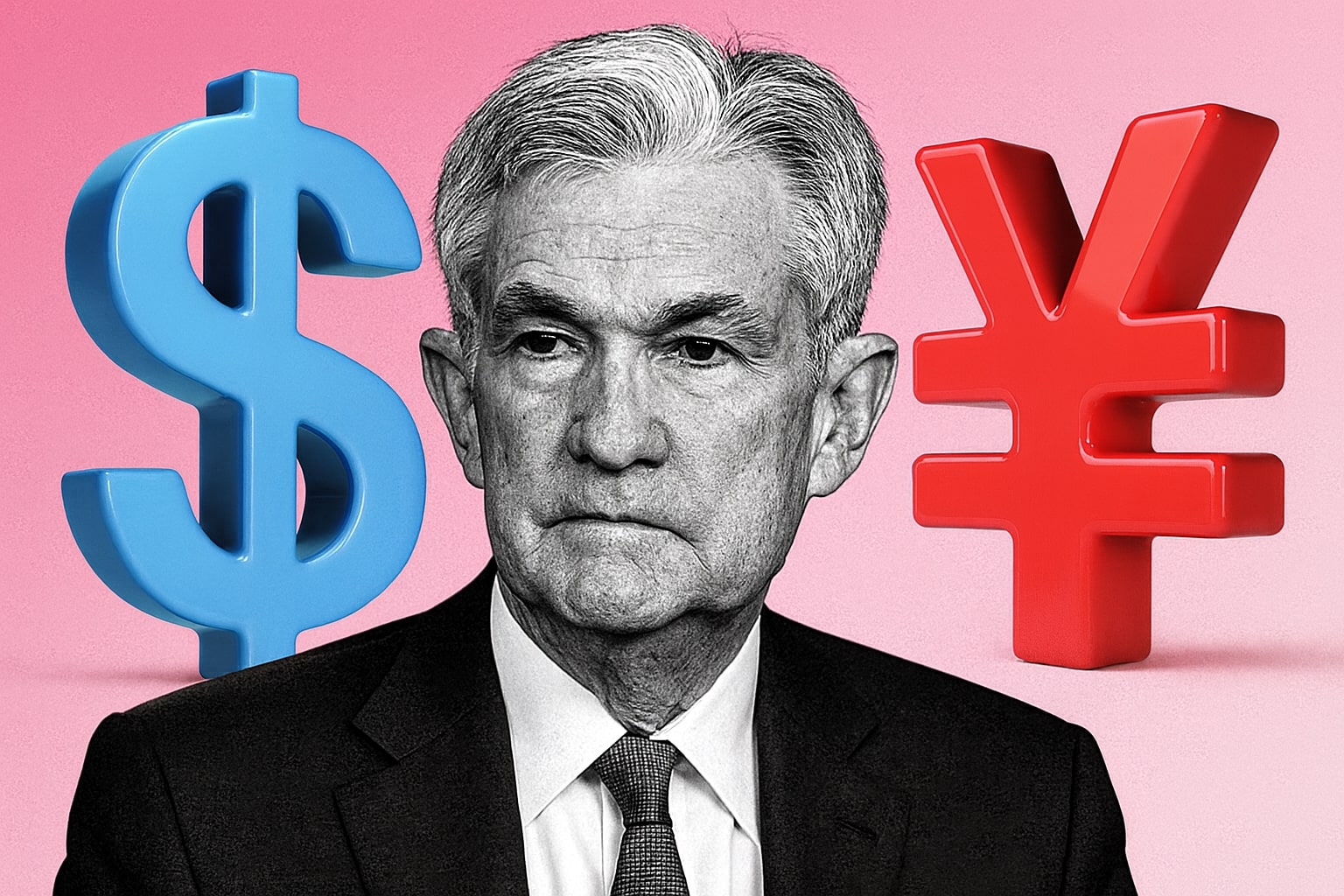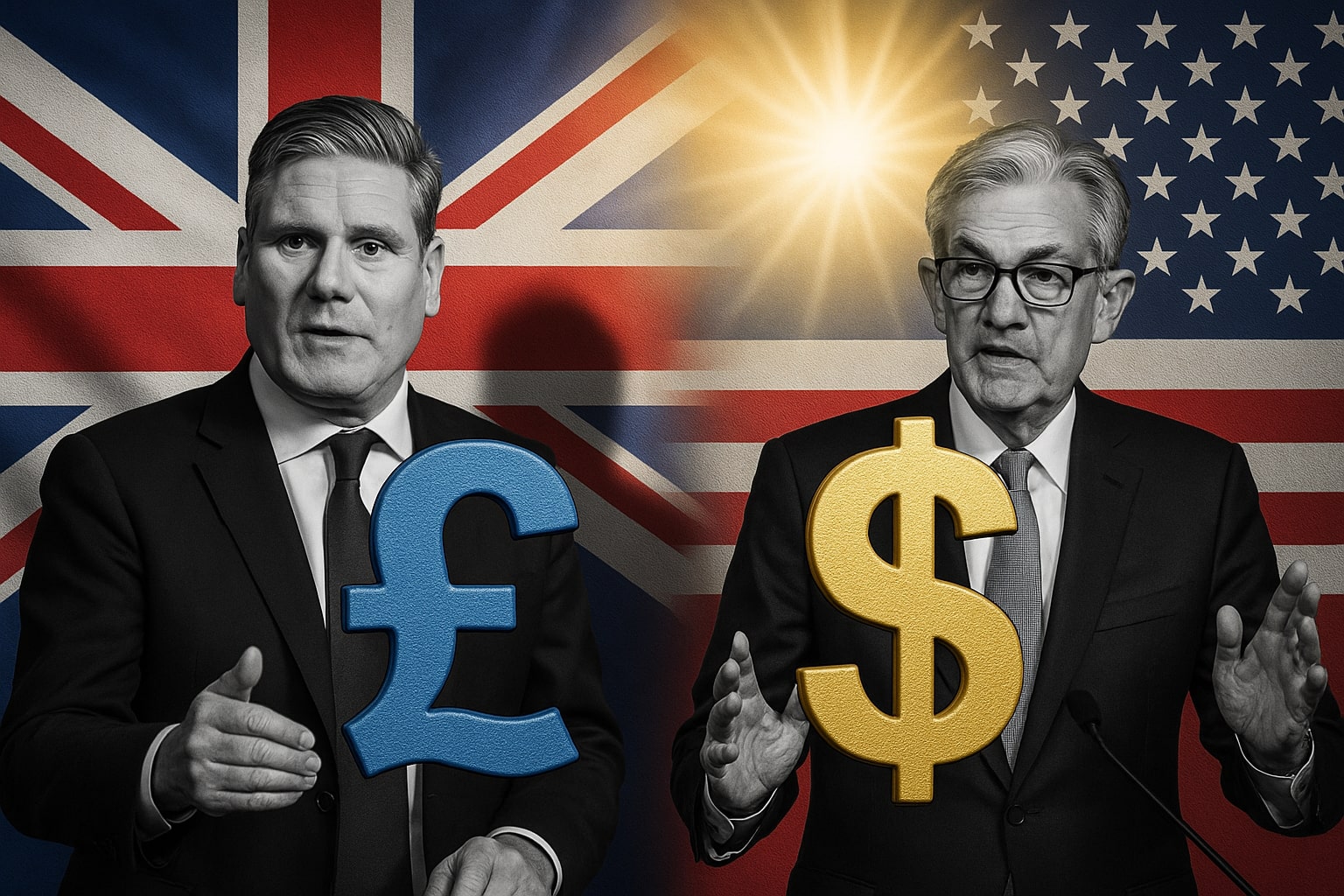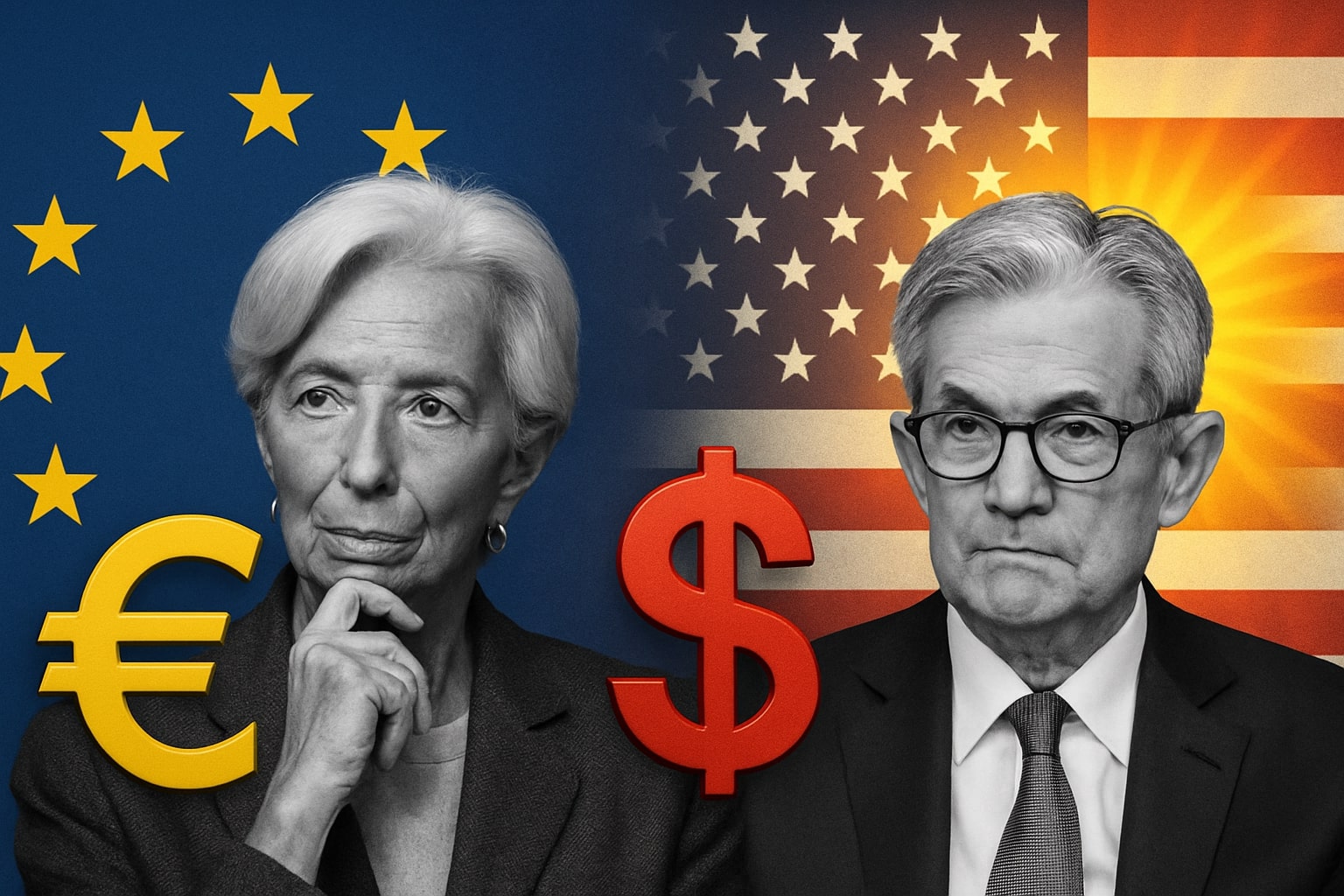
USD/JPY Price Forecast - Dollar to Yen Nears ¥160 as Fiscal Pressures and U.S. Rate Gap Drive Yen to Breaking Point
Japan’s bond selloff, surging stimulus, and muted intervention warnings lift USD/JPY toward multi-year highs while traders brace for Tokyo CPI and BOJ action | That's TradingNEWS
USD/JPY Price Analysis: Yen Faces Critical Crossroads as Fiscal Expansion and U.S. Policy Divergence Drive Volatility
The USD/JPY pair is trading near ¥157.30, after briefly touching ¥157.89, levels unseen since early 2024, as market tension grows over potential intervention by Japanese authorities. The pair’s trajectory reflects the intersection of fiscal pressure in Japan, a widening U.S.-Japan yield differential, and shifting expectations for a December rate move by both the Federal Reserve and the Bank of Japan (BOJ). Analysts warn that the 158–160 range is the high-risk zone historically associated with intervention, yet Tokyo’s silence so far suggests a more complex calculus.
Fiscal Imbalance and Bond Market Stress Accelerate Yen Weakness
Japan’s fiscal posture has turned aggressively expansionary under Prime Minister Sanae Takaichi, with a stimulus exceeding ¥21 trillion ($135 billion) pushing long-term Japanese Government Bond (JGB) yields to multi-decade highs. The yield on 20-year JGBs recently surpassed 1.9%, the highest since 1998, as investors demand higher risk premiums to absorb new debt issuance. The surge in yields has amplified a “sell Japan” sentiment, as rising fiscal uncertainty combines with geopolitical risk from China tensions.
The correlation between USD/JPY and long-end JGB yields has strengthened sharply in recent weeks. Traders are now treating Japanese bonds and the yen as two sides of the same fiscal risk trade. The higher the government borrows, the weaker the yen becomes — a dynamic compounded by Tokyo’s reluctance to tighten policy aggressively despite inflation pressures.
Monetary Policy Divergence Widens Between BOJ and the Federal Reserve
While the BOJ debates a potential rate increase at its December meeting, the probability remains only 53%, according to the latest Reuters poll. In contrast, the Federal Reserve is seen delaying its first rate cut, with U.S. Treasury yields stabilizing near 4.45% on the 10-year note. This policy gap continues to underpin USD strength, as global investors seek higher U.S. returns while funding trades in yen.
Governor Kazuo Ueda acknowledged that prolonged yen depreciation risks feeding inflation expectations, yet BOJ officials remain cautious about moving too early. Meanwhile, the Fed’s measured tone, supported by strong U.S. retail sales and producer price growth of 0.3% month-on-month, has diminished expectations for a near-term pivot. That combination has driven speculative USD/JPY long positions to their highest since mid-2022.
Political and Diplomatic Factors Reduce Immediate Intervention Probability
Despite trading at intervention-sensitive levels, Tokyo’s response has been rhetorical rather than active. Finance Minister Satsuki Katayama reiterated that authorities “stand ready to act against disorderly moves,” yet analysts note the absence of the public panic that typically precedes market action. Google search trends for “yen depreciation” remain subdued compared with 2022 and 2024, when Japan intervened near ¥151 and ¥160 respectively.
Prime Minister Takaichi’s administration benefits from a demographic base less sensitive to imported inflation, particularly younger workers whose wage gains offset higher import costs. This political cushion allows tolerance for a weaker yen in exchange for export competitiveness and domestic wage growth. However, with diplomatic tensions between Tokyo and Beijing escalating and Washington viewing intervention skeptically, the likelihood of coordinated action remains low unless volatility spikes.
Technical Outlook: Rising Momentum Meets Topping Risk
Technically, USD/JPY remains in an uptrend supported by bullish moving averages, with the 50-day EMA near ¥154.20 and the 200-day EMA near ¥149.70. However, the daily chart now shows an emerging evening star reversal pattern, signalling short-term exhaustion after the recent 6% rally. The Relative Strength Index (RSI) has rolled down from overbought territory above 70, indicating momentum fatigue.
Key resistance stands at ¥158.90, followed by the psychological barrier of ¥160.00, where prior interventions occurred. A clean break above ¥160 would expose ¥163–¥165, driven by speculative momentum. On the downside, support is clustered at ¥155.00, followed by ¥153.50, levels aligned with October’s breakout zone. A BOJ surprise or verbal escalation could trigger a sharp ¥3–¥4 correction, bringing USD/JPY toward ¥153 in a single session.
Market Sentiment and Volatility Signals
Volatility in USD/JPY has normalized after months of compression, but implied vols for one-month tenors have risen toward 10.2%, reflecting hedging demand ahead of the December policy meetings. Speculative positioning, measured by CFTC data, shows USD long exposure against JPY near the highest level since the 2022 intervention cycle. Despite this, public concern remains muted — suggesting any corrective pullback would be technical rather than panic-driven.
Equity markets are also influencing flows. Japanese exporters have benefited from yen weakness, with the Nikkei 225 up 9.3% year-to-date, reinforcing the government’s incentive to tolerate a softer currency. U.S. equity resilience, particularly in tech sectors, sustains the carry trade cycle as investors borrow in yen to fund dollar-denominated assets.
Read More
-
SCHD ETF Price at $27: Can SCHD’s 4% Yield and 9.15% Dividend Growth Beat High-Yield Covered Call ETFs?
15.12.2025 · TradingNEWS ArchiveStocks
-
XRP ETFs Close on $1B Inflows as XRPI at $10.92 and XRPR at $15.52 Hit 52-Week Lows
15.12.2025 · TradingNEWS ArchiveCrypto
-
Natural Gas Price Forecast: NG=F Holds the $4 Floor as Oversupply Clashes with 2026 LNG Demand
15.12.2025 · TradingNEWS ArchiveCommodities
-
USD/JPY Price Forecast - Dollar to Yen At 155: Yen Strength Builds As BoJ Hike And NFP Collide
15.12.2025 · TradingNEWS ArchiveForex
Upcoming Economic Triggers and Risk Events
The coming week’s focus lies on Tokyo CPI, wage growth, and unemployment data due November 28. Economists expect headline inflation to slow from 2.8% to 2.6%, while the core-core rate is projected to edge up to 2.9%, reinforcing BOJ caution. U.S. macro data, including PCE inflation and retail sales, will also steer momentum. Softer U.S. data could trigger a corrective yen rebound, but continued strength would push USD/JPY beyond ¥158.50 into intervention territory.
Strategic Assessment and Investment Stance
At present, fundamentals favor continued yen weakness. Fiscal expansion, delayed BOJ normalization, and resilient U.S. yields create a structural bullish case for USD/JPY. Yet technical and policy risks suggest overextension above ¥158 carries asymmetric downside risk. If intervention materializes or inflation surprises higher in Tokyo, short-term volatility could erase weeks of gains.
The data indicates that market participants should treat current levels as speculative rather than stable. The imbalance between Japan’s fiscal stimulus and cautious monetary stance is unsustainable beyond ¥160 without government action. For disciplined investors, risk-adjusted exposure should favor tactical longs only on dips toward ¥154, while maintaining protective stops near ¥153 to guard against surprise intervention.
Verdict: USD/JPY – Hold with Bullish Bias
Based on fiscal dynamics, technical structure, and policy divergence, USD/JPY (FX:USDJPY) remains a Hold with a bullish bias. The near-term trajectory favors testing ¥158.90–¥160.00, with limited probability of sustained intervention before year-end. However, investors should prepare for volatility spikes and short-lived corrections triggered by BOJ rhetoric or coordinated currency defense.



















